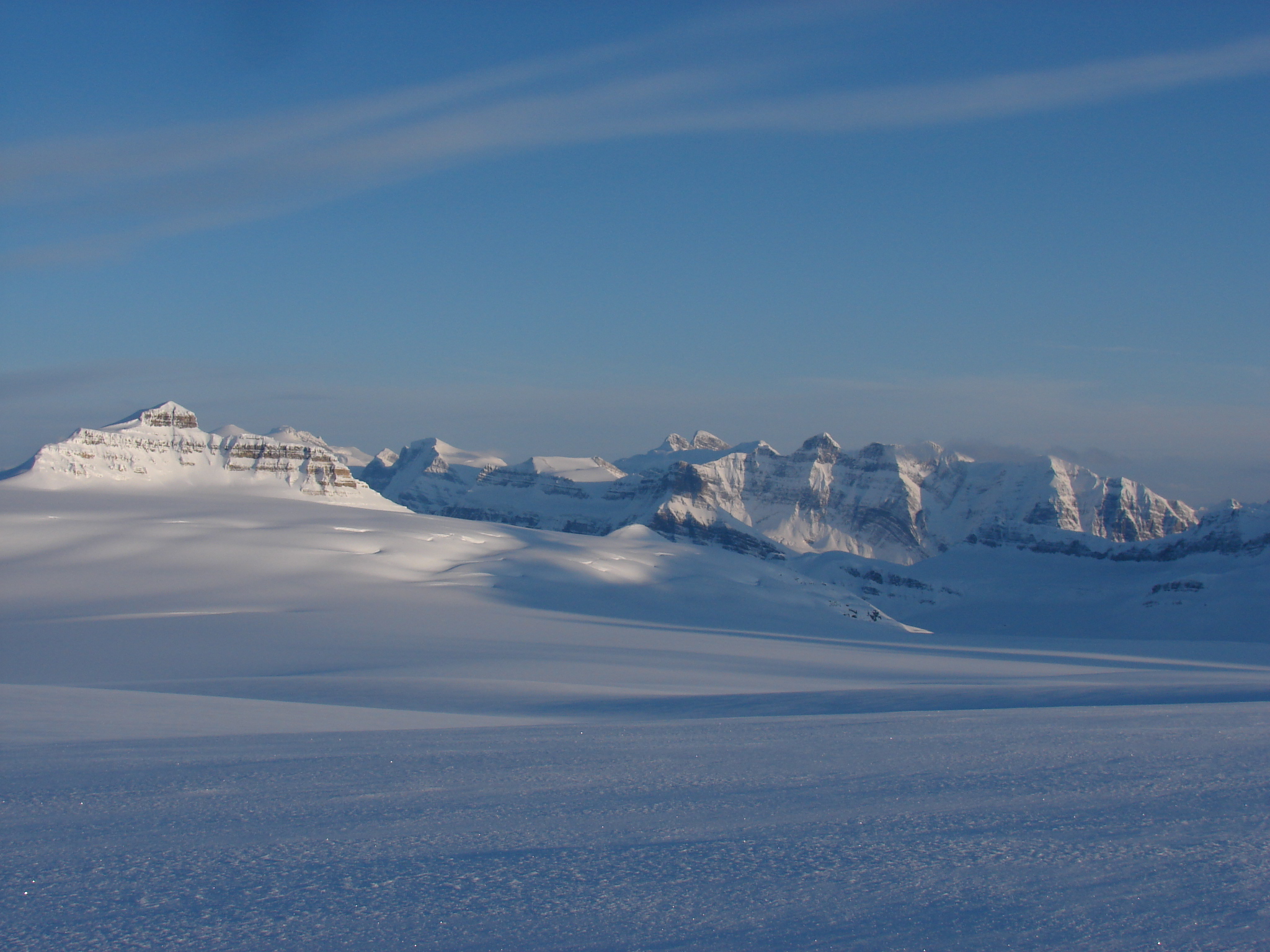Hydrology of Glacierized Basins
Glaciers delay melting and runoff from seasonal snow until late in the summer. Within a glacierized catchment, they also supplement rainfall and seasonal snowmelt with meltwater from glacial ice. Within a given glacier, there can be year‐to‐year variations in meltwater storage and runoff. However, a few generalizations are possible.
Diurnal Variability

Glacier runoff has a pronounced diurnal cycle on small alpine glaciers, due to the radiation-driven diurnal melt cycle. There is typically a delay of several hours between peak melting and peak runoff, as measured by discharge at the glacier terminus.
On larger glacier systems, delays can be much greater and the discharge is more diffuse, due to the distribution of path lengths and hydraulic efficiencies in different parts of the glacier drainage system.
Seasonal Variability
The glacier drainage system evolves on seasonal timescales. Early in the melt season, the drainage system does not yet have the capacity to drain the influx of surface meltwater and there is temporary storage of meltwater on the surface, englacially, and at the bed.
As the melt season progresses, saturation of the snow and firn aquifers and elimination of the supraglacial snow cover cause increased inputs to the englacial and subglacial systems, which develop increased connectivity and a greater drainage capacity. Glacier discharge exceeds meltwater inputs as stored water is evacuated. Late in the melt season, stored water has been flushed and the mature drainage system is highly efficient, leading to rapid throughput and daily discharge totals similar to the daily meltwater inputs.
Through the winter, meltwater shuts down on glaciers in the Rockies. Void of water, subglacial and englacial conduits creep closed and the channelized drainage system in most valley and outlet glaciers shuts down. Free water is still present at the base of the glacier throughout the winter and is sometimes evident through trickling subglacial outlet streams or artesian upwellings in the glacier forefield, signalling drainage through the shallow groundwater system. Most glacial streams freeze up in the winter, with negligible discharge, although some streams remain active underneath a mantle of river ice and snow.
 Annual Runoff
Annual Runoff
Glacier contributions to runoff can be a significant fraction of total annual discharge in catchments with a large glacierized area. Glacier inputs dwindle as one goes progressively downstream in most alpine settings, as a result of glaciers making up a smaller percentage of the landscape.
In the eastern slopes of the Canadian Rockies, glacier inputs to the Bow River at Banff can exceed 50% in late summer of a dry year, although glacier melt constitutes only 2% of the average annual. Annual discharge statistics therefore mask the importance of glacier contributions to stream flow. In most summers in the Canadian Rockies, seasonal snow persists until July at low elevations on the glaciers, and until August at higher elevations. There is little seasonal snow remaining elsewhere in the mountains at this time. Once this snow cover is removed, glacier runoff is dominated by melt from the low-albedo glacier ice. In summers of drought, groundwater recharge and ice melt are the sole sources of sustenance for the mountain streams.
Glacier runoff is proportional to available melt energy, whereas runoff in non-glacierized catchments is governed by precipitation. This means that discharge from glacierized catchments is less sensitive to weather fluctuations, with a supply of runoff in periods of drought that is lacking in other non-glacierized catchments. Total annual runoff in glacierized catchments varies interannually as a function of glacier mass balance, depending if:
- Precipitation is stored as ice (positive mass balance)
- Long-term ice storage is tapped (negative mass balance)
In the latter case, specific runoff (discharge per unit area of the landscape) from glaciers exceeds that from the rest of the catchment. That is, glaciers offer a supplement to the runoff associated with rainfall and seasonal snowmelt. This may also be true in the first case, despite a positive annual glacier mass balance, as glaciers often act as snow-traps and generate greater annual snowmelt than non-glacierized areas in a catchment.
Download
Alberta Glacier Inventory and Ice Volume Estimation (3.49 MB)
